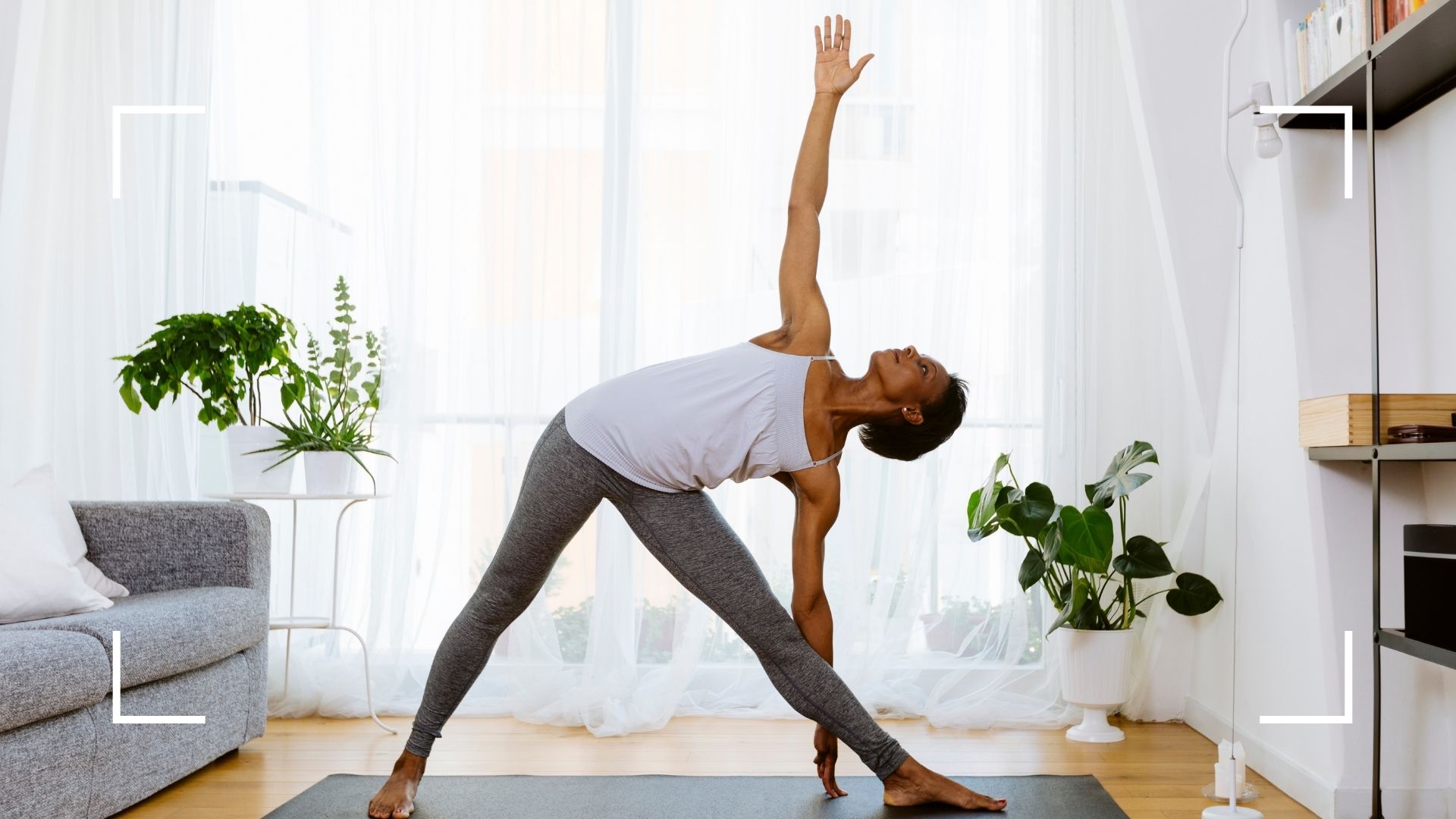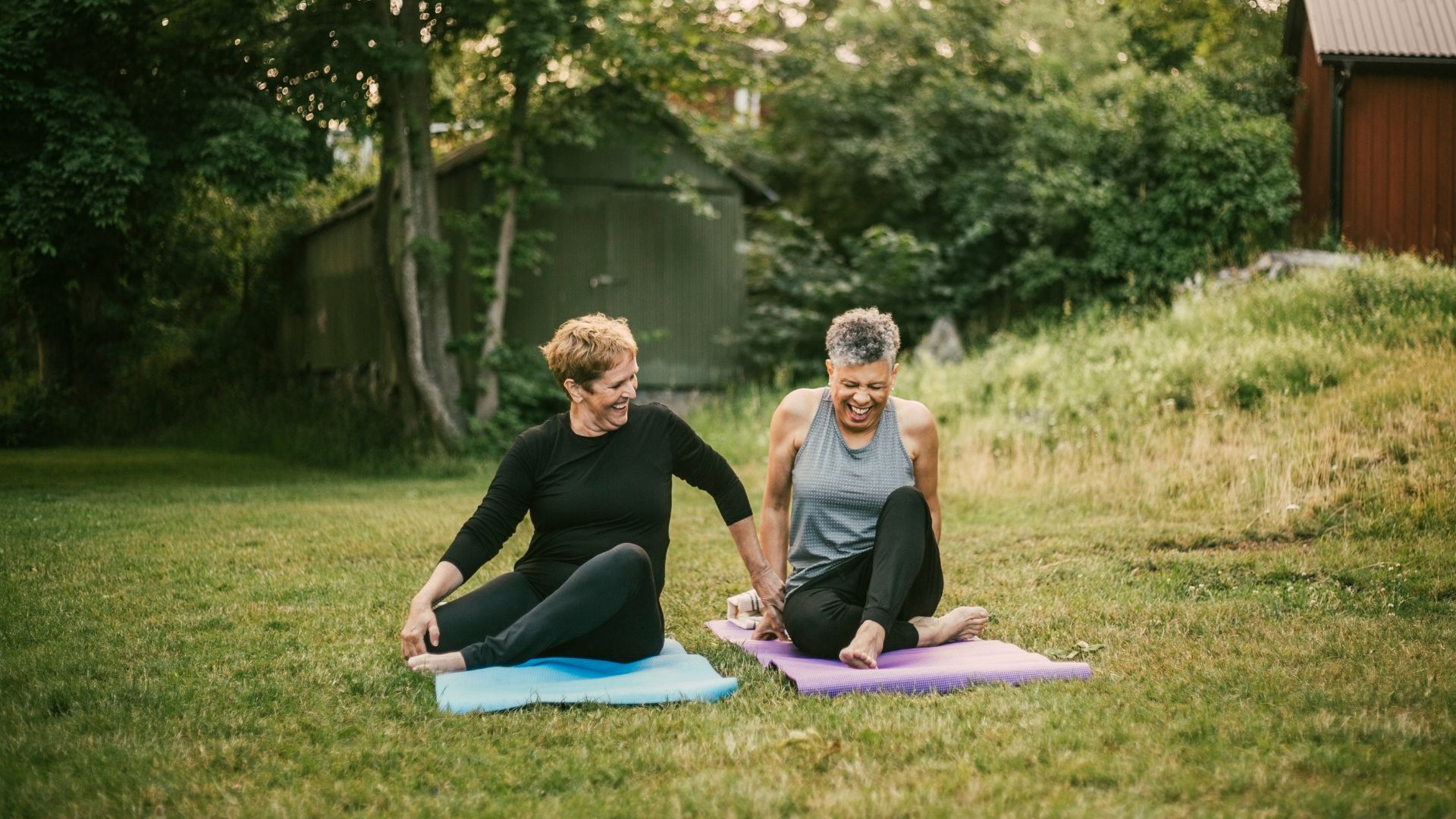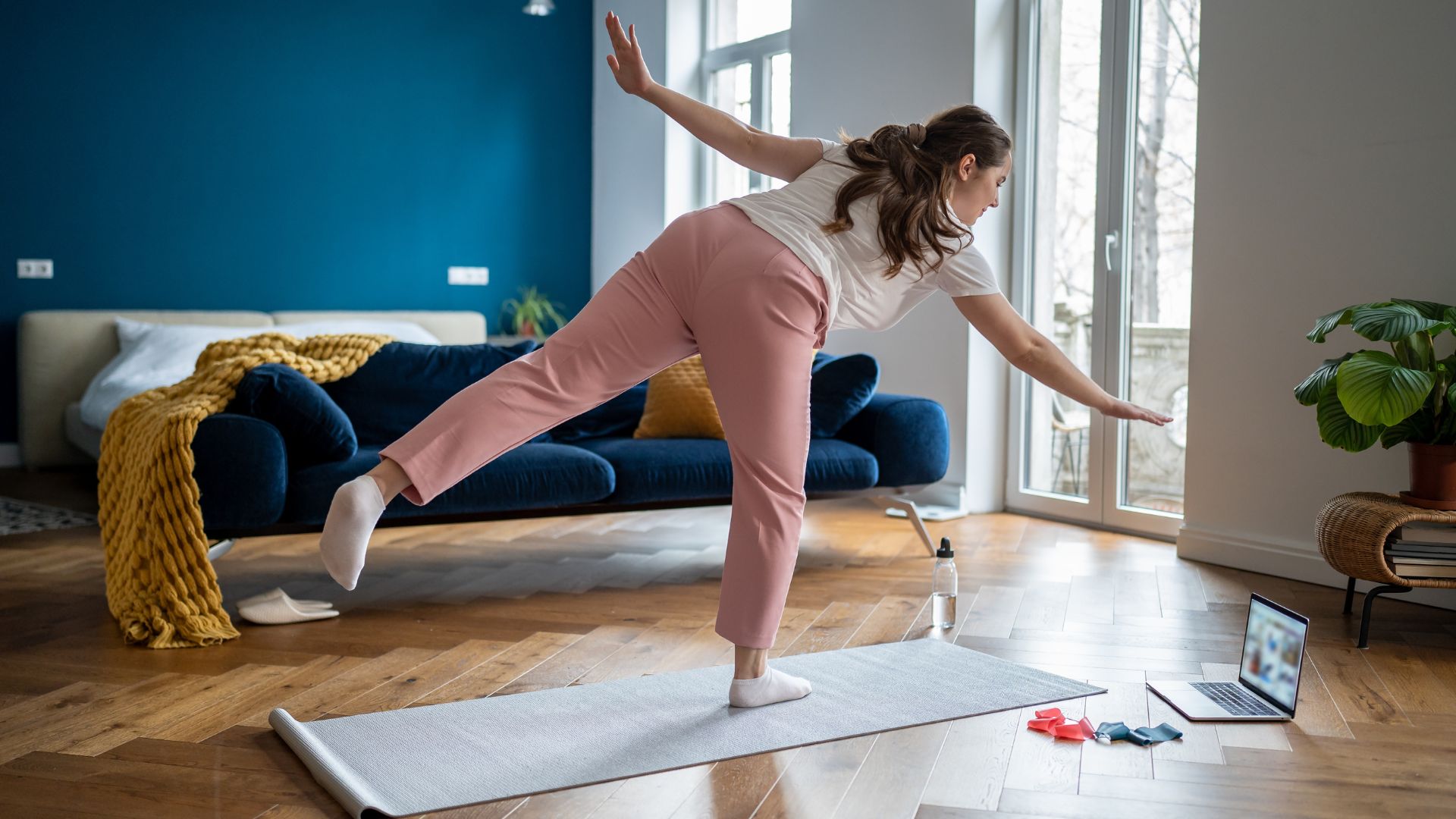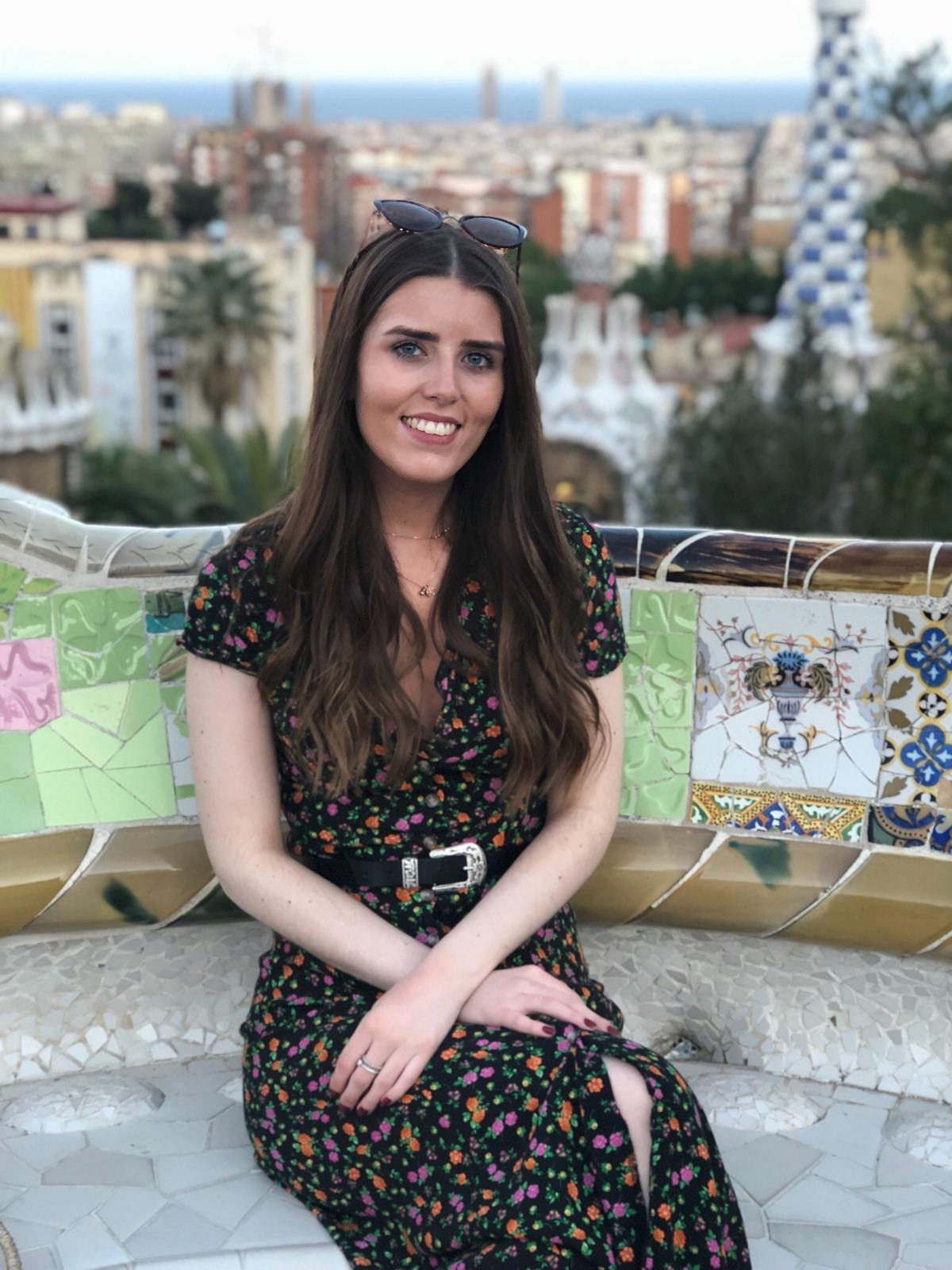Yoga for beginners: how to get into yoga whatever your age or fitness level
Looking to try yoga for beginners? Here, three teachers explain the best way to get into the practice and all the benefits you can experience


Whatever your level of fitness, yoga for beginners is an accessible way to get into exercise. The practice uses stretching and light strength training to bring peace to both mind and body, strengthen muscles, and improve flexibility.
We probably all know someone who loves yoga - and for good reason. Thanks to all the different types out there, from traditional yoga nidra to power yoga and even hot yoga, there's truly something for everyone.
To help you on your yoga journey, whether you're looking to do yoga for weight loss or just experience the benefits of yoga as part of a daily routine, we asked the experts for a lowdown on the mindful practice and their ultimate top tips for getting started.
Why yoga is great for beginners
Ultimately, yoga is a union of the mind, body, and breath, explains Rebecca Young Riboldi, a certified yoga instructor. Combining a series of poses with an emphasis on the breath, it’s a workout for both your body and your mind. The origins of this ancient practice in India date back more than 5,000 years. The language used in yoga is Sanskrit - one of the oldest languages in the world. And you’ll often hear words like āsana and Savasana during practice.
“Yoga is an incredibly transformational and constantly evolving practice,” says yoga teacher Alana Murrin. “It combines mindful movement with breathing techniques, meditation, and yogic philosophy, to help you reach a state of equilibrium and balance in body and mind.” Murrin points out that some aspects of yoga will feel easier than others, but those you find most challenging will be your most powerful teachers. Patience and commitment are key when it comes to this practice.
They are also two characteristics you can gain and strengthen, alongside many other benefits of yoga, which include:
- Strength: "While working deeper into the length of ligaments and muscles can be an aspect of yoga, there is an equal emphasis on strength and agility," Young Ribodi tells us. This strength-building aspect is so important as it helps your body maintain the various poses in the practice.
- Breathing: The mindful practice can also help you with how to breathe better, says Young Riboldi, who works at FLYLDN. “Regular practice allows you to breath deeper, strengthen the diaphragm, and allows the lungs to work more efficiently,” she says.
- Reduce bloating and aid digestion: The gut-brain axis refers to how the gut can be affected by psychological stress. By practicing yoga and reducing stress, some people believe you can actually improve gut health and increase circulation through movement.
- Ease lower back pain: Yoga can also be a great relief for those who suffer from lower back pain. Research from the Boston University School of Medicine and others found yoga for back pain could be just as effective for back pain relief when compared to physical therapy. The practice builds strength and agility, making it easier to move around day-to-day.
- Emotional wellbeing: “Yoga offers an opportunity to connect back to yourself and in a busy world with infinite distractions, this is becoming increasingly important. Regardless of your mood, energy levels, and skills, the practice will always create a space for you to show up just as you are,” says Murrin, who works at Psycle.
- Helps to reduce stress: “Yoga helps to stimulate the parasympathetic nervous system, helping you feel more relaxed and alleviating any symptoms of anxiety and stress,” Murrin tells us. Plus, research by the University of Chile shows practicing yoga for just three months may lower levels of stress hormone cortisol.
- Improved sleep: When we reduce stress, we sleep better and have a greater sense of wellbeing, too. A national survey by the NCCIH looked at the impact of yoga on the lives of those who practiced it. It found 55% of yogis felt the practice improved their sleep, while 85% found it reduced their stress levels.
How to start yoga
1. Be patient
Yoga is not something you will master, it’s called a ‘practice’ for a reason, so don’t be tempted to give up after a few classes. “There is no being good or bad at yoga,” says Murrin. “Respect your own journey and your body’s inner wisdom. There will never be a moment you’re not good enough, so don’t compare yourself to others."
Sign up to our free daily email for the latest royal and entertainment news, interesting opinion, expert advice on styling and beauty trends, and no-nonsense guides to the health and wellness questions you want answered.
Young Riboldi often speaks to students who feel confused after their first class. “It’s totally normal,” she says. “Keep up a routine and after three to five classes you will start to get the hang of it.”
2. Find a class you love
Whether you practice yoga at home with a friend using one of the best yoga apps or practice at a studio, finding a class you love is so important for your journey. If you don’t connect with the teacher or space, it could taint your yoga experience and you won’t want to keep practicing. “It’s so important to feel comfortable, safe, and inspired in your practice,” Murrin tells us.
“Just like in school, we all connect with different teachers that help us to better learn and grow, and it’s the same in yoga,” Young Riboldi explains.

3. Meditate
“One thing that has helped me get more out of my yoga practice over the years is an interest in understanding and practicing meditation,” Young Riboldi says. “There are many meditation apps that make it accessible these days and it's really a great skill to practice that is extremely complementary to a yoga practice."
Before your first mouthful of coffee in the morning, take a few moments to breathe deeply in through your nose and out through your mouth. “As you get more used to breathwork and meditation, you’ll find it appears more in your life unconsciously. Whether that’s a walk around the park, or five minutes of peace when you wake up, that all counts and will have great mindful benefits,” explains yoga teacher Chatty Dobson, who is also the founder of FLEX Chelsea.
The square breathing method is a great technique to get you started:
- Close your eyes and visualize a square in your mind’s eye
- As you breathe follow the sides of the square in your mind
- Breathe in for a count of 4
- Hold for a count of 4
- Breathe out for a count of 4
- Pause for a count of 4
The best types of yoga for beginners
There are lots of different types of yoga and many different suitable yoga stretches for beginners. The best type of yoga for you will depend on your health and fitness goals, but here are a few to explore:
1. Hatha yoga
Hatha yoga is a gentle way to start yoga for beginners. It focuses on teaching the physical postures of yoga with an emphasis on the breath. You’ll learn the basics and become familiar with the poses you can expect to see as you try other types of yoga.
In a Hatha class, you’ll also hold the poses for longer compared to flow practices. “As you hold the poses for longer, you have more opportunity to familiarise yourself with the structure and experience of each pose,” says Kat Farrants, a yoga teacher with almost 30 years in the industry.
2. Restorative yoga
“Restorative yoga is a very calm and still practice, where you can experience deep relaxation through a series of long, passive stretches, fully supported by props,” says Farrants.
Holding passive poses doesn’t put too much pressure on muscles, and will actually help your body release any built-up tension. This is a great bedtime yoga practice. It will kickstart your parasympathetic nervous system and, as the name suggests, it will leave you feeling restored and ready for deep sleep.

3. Yin yoga
Yin yoga focuses on targeting the deep connective tissue around the muscles to stretch and lengthen. In a Yin class, you can expect to hold each pose for up to 10 minutes, which really allows the muscles time to stretch and tension to melt away.
“Unlike the Vinyasa style, it’s not a sweeping, flowing sequence. You will hold a series of poses often supported by bolsters, cushions, and blankets for a minimum of three minutes to help the body relax and open up,” Murrin says.
4. Vinyasa yoga
Vinyasa is a more dynamic style of yoga and is best suited to those who’ve learned the basics in Hatha or Yin. You’ll actively hold each pose for a few breaths before flowing into the next pose.
Vinyasa classes are great for strength training and building endurance. Combined with a focus on the breath, you can expect to feel energized and agile after a flow. A perfect way to start your day.
What to wear for yoga
Comfort is key during yoga, whether you're doing yoga every day or just once in a while, so find something that makes you feel good and allows you to move freely through the poses. "Avoid clothes with zips or fastenings so you can lie comfortably on your back or stomach during class," Murrin advises.
You should also avoid clothing that’s too loose. “You don’t want to find yourself adjusting and moving things around during your practice. Avoid wearing a baggy shirt or sweater as it will end up irritating you by falling in your face during downward dog, which can also disrupt your breathing,” Young Riboldi says.
Instead opt for fitted leggings (see our round-up of the best workout leggings for top recommendations), a comfortable sports bra, and a breathable sports top. You should also remove socks or shoes for your practice to give you a better grip on the mat.
Do I need a yoga mat as a beginner?
The brilliant thing about yoga is you don’t need much to get started but you will need a yoga mat, and finding a mat that supports your body while you move and stays securely on the floor is a must.
We reviewed all the best yoga mats on the market, and highly rate the Lululemon Reversible Mat 3mm. Made of a natural rubber that offers ultimate support for joints, this yoga mat is slightly wider than some of the other options on the market—providing plenty of room for movement. It doesn't contain latex, which is great for those with allergies. The antimicrobial properties of the mat prevent mold and mildew build-up (but you should still learn how to clean a yoga mat properly).
The best thick yoga mats are a great option for those who need a little extra cushioning to support and protect joints. We love the Gaiam Premium Mandala 6mm yoga mat for this. It’s a stylish and durable mat, offering lots of grip and stability.
Yoga for beginners on YouTube
To get you started, we've rounded up our favorite yoga practices for beginners on YouTube. From Yoga with Adrienne to Cat Meffan, here are four beginner's practices we love.
1. Morning Yoga Stretch for Beginners | Yoga with Kassandra
Time: 10 minutes
Just 10 minutes a day can make all the difference at the beginning of your yoga journey. This quick morning routine from Yoga with Kassandra will wake up your muscles and give you the energy boost you need to kick off your day.
2. Morning Yoga for Beginners - Weight Loss Edition | Sarah Beth Yoga
Time: 15 minutes
Ready to get a sweat on? Try Sarah Beth Yoga's morning routine. This 15-minute practice is great for strengthening and toning. Designed specifically for those turning to yoga for weight loss, Sarah advises completing this workout three times a week until you feel ready to move on to an intermediate or longer practice.
3. Foundations of Yoga | Yoga with Adriene
Time: 20 minutes
Learn the foundations of a Vinyasa flow with YouTube sensation Yoga with Adriene. This is a great at-home practice to try before taking a class at your local studio. The slow 20-minute practice will help you nail the basics of yoga.
4. Yoga for Beginners | Cat Meffan
Time: 30 minutes
When you're ready to try a longer practice, join Cat Meffan (and her super cute pup) for a relaxed 30-minute routine. This is a great beginner's yoga practice, combining basic and gentle movements with a focus on the breath.
Ciara McGinley is a meditation practitioner and health journalist. She qualified as a meditation teacher with the British School of Meditation in 2020 and is the founder of Finding Quiet, a series of classes, workshops and retreats that combine meditation practices and mindfulness techniques to make mindful living realistic in an always-switched-on modern world. She is all about bettering that mind-body connection but believes wellness looks different to everyone.
Ciara is also the former Health Channel Editor at woman&home and has covered all things health and wellbeing for years, from fitness to sleep to relationships.
